
Be Prepared
Extreme Weather
Extreme weather can happen anytime, in any part of the country. Severe weather can include hazardous conditions produced by thunderstorms, including damaging winds, tornadoes, large hail, flooding and flash flooding, and winter storms associated with freezing rain, sleet, snow, and strong winds.
Know your Risk
Understand the type of hazardous weather that affects you and your family where you live.
Develop an emergency plan based on your local weather hazards and practice your plan.

How to Protect Yourself from Winter Weather
 IF YOU ARE UNDER A WINTER STORM WARNING, FIND SHELTER RIGHT AWAY
IF YOU ARE UNDER A WINTER STORM WARNING, FIND SHELTER RIGHT AWAY
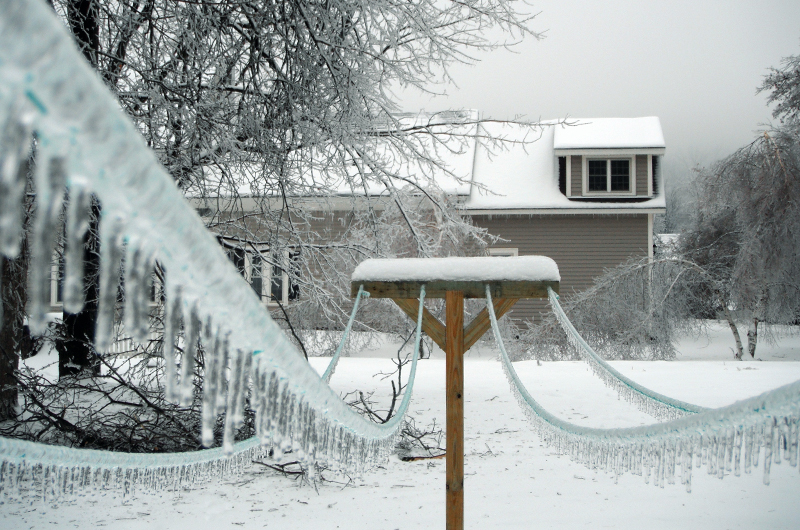
Winter storms create a higher risk of car accidents, hypothermia, frostbite, carbon monoxide poisoning, and heart attacks from overexertion. Winter storms including blizzards can bring extreme cold, freezing rain, snow, ice and high winds.
A winter storm can:
- Last a few hours or several days.
- Cut off heat, power and communication services.
- Put older adults, children, sick individuals and pets at greater risk.
Know your winter weather terms:
Winter Storm Warning
Issued when hazardous winter weather in the form of heavy snow, heavy freezing rain, or heavy sleet is imminent or occurring. Winter Storm Warnings are usually issued 12 to 24 hours before the event is expected to begin.
Winter Storm Watch
Alerts the public to the possibility of a blizzard, heavy snow, heavy freezing rain, or heavy sleet. Winter Storm Watches are usually issued 12 to 48 hours before the beginning of a Winter Storm.
Winter Weather Advisory
Issued for accumulations of snow, freezing rain, freezing drizzle, and sleet which will cause significant inconveniences and, if caution is not exercised, could lead to life-threatening situations.
Know Your Risk for Winter Storms
Pay attention to weather reports and warnings of freezing weather and winter storms. Listen for emergency information and alerts. Sign up for your community’s warning system. The Emergency Alert System (EAS) and National Oceanic and Atmospheric Administration (NOAA) Weather Radio also provide emergency alerts.
Preparing for Winter Weather
Prepare your home to keep out the cold with insulation, caulking and weather stripping. Learn how to keep pipes from freezing. Install and test smoke alarms and carbon monoxide detectors with battery backups. Gather supplies in case you need to stay home for several days without power. Keep in mind each person’s specific needs, including medication. Remember the needs of your pets. Have extra batteries for radios and flashlights. If you are unable to afford your heating costs, weatherization or energy-related home repairs, contact the Low Income Home Energy Assistance Program (LIHEAP) for help.
In Case of Emergency
Be prepared for winter weather at home, at work and in your car. Create an emergency supply kit for your car. Include jumper cables, sand, a flashlight, warm clothes, blankets, bottled water and non-perishable snacks. Keep a full tank of gas.
Coronavirus Disease 2019 (COVID-19)
Sign up for email updates about coronavirus from the Centers for Disease Control and Prevention (CDC). Learn the symptoms of COVID-19 and follow CDC guidance. If you are able to, set aside items like soap, hand sanitizer that contains at least 60 percent alcohol, disinfecting wipes, and general household cleaning supplies that you can use to disinfect surfaces you touch regularly.
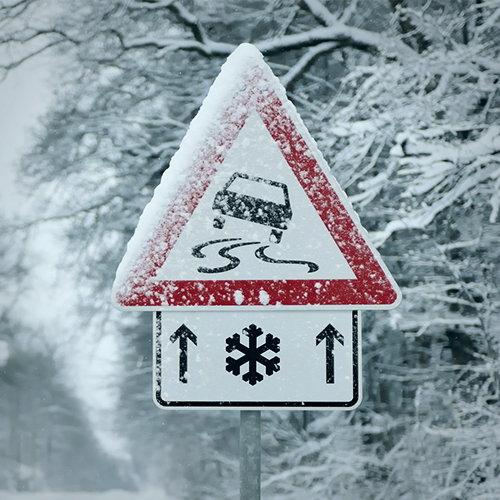
Stay Safe During Winter Weather
Avoid carbon monoxide poisoning. Only use generators and grills outdoors and away from windows. Never heat your home with a gas stovetop or oven.
- Stay off roads if at all possible. If trapped in your car, then stay inside.
- Limit your time outside. If you need to go outside, then wear layers of warm clothing. Watch for signs of frostbite and hypothermia.
- Reduce the risk of a heart attack by avoiding overexertion when shoveling snow and walking in the snow.
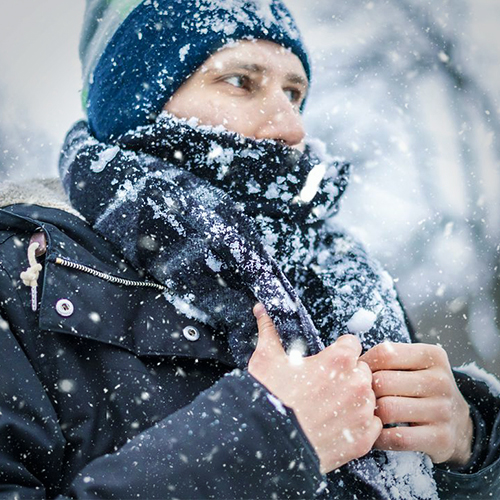
Learn the signs of, and basic treatments for, frostbite and hypothermia.
Frostbite causes loss of feeling and color around the face, fingers and toes.
- Signs: Numbness, white or grayish-yellow skin, firm or waxy skin.
- Actions: Go to a warm room. Soak in warm water. Use body heat to warm. Do not massage or use a heating pad.
Hypothermia is an unusually low body temperature. A temperature below 95 degrees is an emergency.
- Signs: Shivering, exhaustion, confusion, fumbling hands, memory loss, slurred speech or drowsiness.
- Actions: Go to a warm room. Warm the center of the body first—chest, neck, head and groin. Keep dry and wrapped up in warm blankets, including the head and neck.
Associated Content
How to Protect Yourself from an Avalanche
 The most important actions you can take to survive an avalanche are done before it happens.
The most important actions you can take to survive an avalanche are done before it happens.
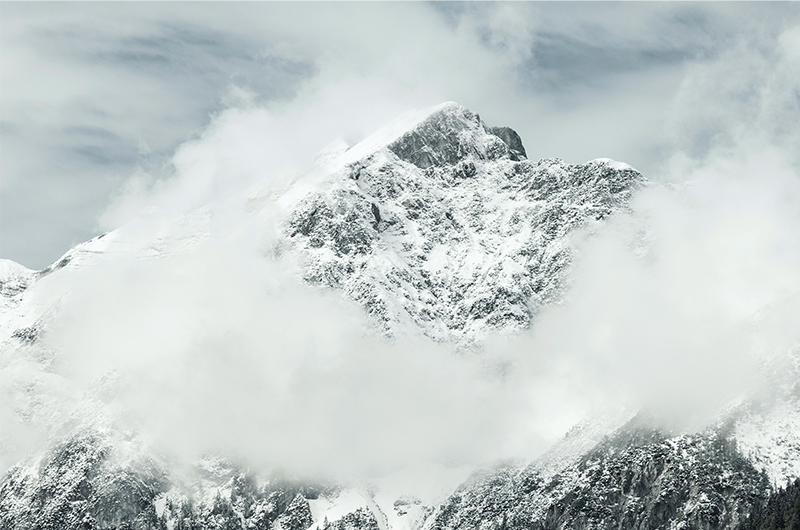
An avalanche is a large amount of snow moving quickly down a mountain, typically on slopes of 30 to 45 degrees. When an avalanche stops, the snow becomes solid like concrete and people are unable to dig out. People caught in avalanches can die from suffocation, trauma, or hypothermia.
Avalanches can:
- Be caused by people, new snow and wind.
- Move at speeds of 60 to 80 MPH.
- Peak during the period of December through March.
Know Your Avalanche Risk
Learn about your local avalanche risk. Know the signs of increased danger, including recent avalanches and shooting cracks across slopes. Avoid areas of increased risk, such as slopes steeper than 30 degrees or areas under steep slopes. Get training on how to recognize hazardous conditions and avalanche-prone locations. Sign up for alerts from a U.S. Forest Service Avalanche Center near you. Your community may also have a local warning system.
Preparing for Avalanche
Get proper equipment to protect yourself from head injuries and create air pockets. Receive first aid training so you can recognize and treat suffocation, hypothermia, traumatic injury and shock. Wear a helmet to help reduce head injuries and create air pockets. Wear an avalanche beacon to help rescuers locate you. Use an avalanche airbag that may help you from being completely buried. Carry a collapsible avalanche probe and a small shovel to help rescue others.
Consider Overlapping Hazards: Coronavirus Disease 2019 (COVID-19)
Remember, there is no evidence that cold weather and snow can kill the coronavirus disease. Be sure to have several clean masks to use in case your mask becomes wet or damp from snow. Cloth masks should not be worn when they become damp or wet. Be sure to wash your mask regularly.
Masks may make it difficult to breathe, especially for those engaging in high intensity activities. Remove your mask if you are having difficulty breathing. If you are unable to wear a mask, maintain a distance of at least six feet between yourself and others.
Signs of Avalanche
Learn the signs of an avalanche, and how to use safety and rescue equipment.
Follow avalanche warnings on roads. Roads may be closed, or vehicles may be advised not to stop on the roadside.
Stay Safe During an Avalanche
- Use and carry safety equipment and rescue gear.
- If your partner or others are buried, call 9-1-1 and then begin to search if it is safe to do so.
- If you have the proper training, treat others for suffocation, hypothermia, traumatic injury or shock.
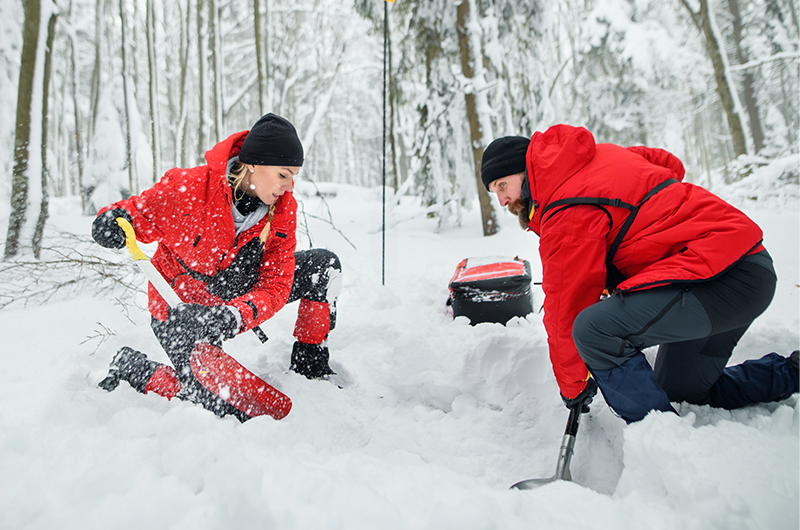
Returning After an Avalanche
Know the signs and ways to treat hypothermia.
- Hypothermia is an unusually low body temperature. A body temperature below 95 degrees is an emergency.
- Signs: Shivering, exhaustion, confusion, fumbling hands, memory loss, slurred speech and drowsiness.
- Actions: Go to a warm room or shelter. Warm the center of the body first—chest, neck, head and groin. Keep the person dry and wrapped up in warm blankets, including the head and neck.
- Engage virtually with your community through video and phone calls. Know that it’s normal to feel anxious or stressed. Take care of your body and talk to someone if you are feeling upset.
Associated Content
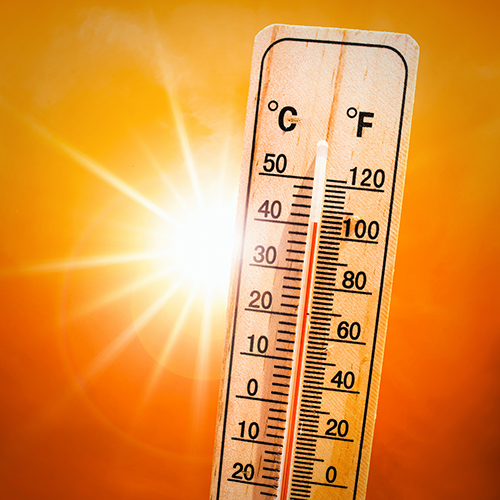 Extreme heat is a period of high heat and humidity with temperatures above 90 degrees for at least two to three days. In extreme heat your body works extra hard to maintain a normal temperature, which can lead to death. Extreme heat is responsible for the highest number of annual deaths among all weather-related hazards. Older adults, children and sick or overweight individuals are at greater risk from extreme heat. Humidity increases the feeling of heat.
Extreme heat is a period of high heat and humidity with temperatures above 90 degrees for at least two to three days. In extreme heat your body works extra hard to maintain a normal temperature, which can lead to death. Extreme heat is responsible for the highest number of annual deaths among all weather-related hazards. Older adults, children and sick or overweight individuals are at greater risk from extreme heat. Humidity increases the feeling of heat.
Prepare for Extreme Heat
- Learn to recognize the signs of heat illness.
- Do not rely on a fan as your primary cooling device. Fans create air flow and a false sense of comfort, but do not reduce body temperature or prevent heat-related illnesses.
- Identify places in your community where you can go to get cool such as libraries and shopping malls or visit one of Salt Lake County’s many cooling centers.
- Cover windows with drapes or shades.
- Weather-strip doors and windows.
- Use window reflectors specifically designed to reflect heat back outside.
- Add insulation to keep the heat out.
- Use a powered attic ventilator, or attic fan, to regulate the heat level of a building’s attic by clearing out hot air.
- Install window air conditioners and insulate around them.
- If you are unable to afford your cooling costs, weatherization, or energy-related home repairs, contact the Low Income Home Energy Assistance Program (LIHEAP) for help.
Stay Safe DURING Extreme Heat
- Never leave people or pets in a closed car on a warm day.
- If air conditioning is not available in your home, go to a cooling center.
- Take cool showers or baths.
- Wear loose, lightweight, light-colored clothing.
- Use your oven less to help reduce the temperature in your home.
- If you’re outside, find shade. Wear a hat wide enough to protect your face.
- Drink plenty of fluids to stay hydrated.
- Avoid high-energy activities or work outdoors, during midday heat, if possible.
- Check on family members, seniors, and neighbors.
- Watch for heat cramps, heat exhaustion and heat stroke.
- Consider pet safety. If they are outside, make sure they have plenty of cool water and access to comfortable shade. Asphalt and dark pavement can be very hot to your pet’s feet.
- If using a mask, use one that is made of breathable fabric, such as cotton, instead of polyester. Don’t wear a mask if you feel yourself overheating or have trouble breathing.
Heat-Related Illnesses
Know the signs of heat-related illnesses and ways to respond. If you are sick and need medical attention, contact your healthcare provider for advice and shelter in place if you can. If you are experiencing a medical emergency call 9-1-1.
Get more detailed information about heat-related illnesses from the CDC and National Weather Service.
HEAT STROKE
Signs:
- Extremely high body temperature (above 103 degrees F) taken orally
- Red, hot, and dry skin with no sweat
- Rapid, strong pulse
- Dizziness, confusion, or unconsciousness
If you suspect heat stroke, call 9-1-1 or get the person to a hospital immediately. Cool down with whatever methods are available until medical help arrives. Do not give the person anything to drink.
HEAT CRAMPS
- Signs: Muscle pains or spasms in the stomach, arms, or legs
HEAT EXHAUSTION
- Signs: Heavy sweating, paleness, muscle cramps, tiredness, weakness, fast or weak pulse, dizziness, headache, fainting, nausea, vomiting
If you have signs of heat cramps or heat exhaustion, go to a cooler location, and cool down by removing excess clothing and taking sips of sports drinks or water. Call your healthcare provider if symptoms get worse or last more than an hour.
Associated Content
- Extreme Heat Information Sheet (PDF)
- Children, Pets and Vehicles (weather.gov)
- You Can Help Prevent Hot Car Deaths (NHTSA)
- Protective Actions Research for Extreme Heat
- National Weather Service Heat Safety Tips and Resources
- National Weather Service – Heat Illnesses
- Centers for Disease Control and Prevention: Extreme Heat
- Warning Signs and Symptoms of Heat-Related Illness
- National Integrated Heat Health Information System
Floods/Flash Flooding
Flooding is a temporary overflow of water onto land that is normally dry. Floods are the most common natural disaster in the United States. Failing to evacuate flooded areas or entering flood waters can lead to injury or death.
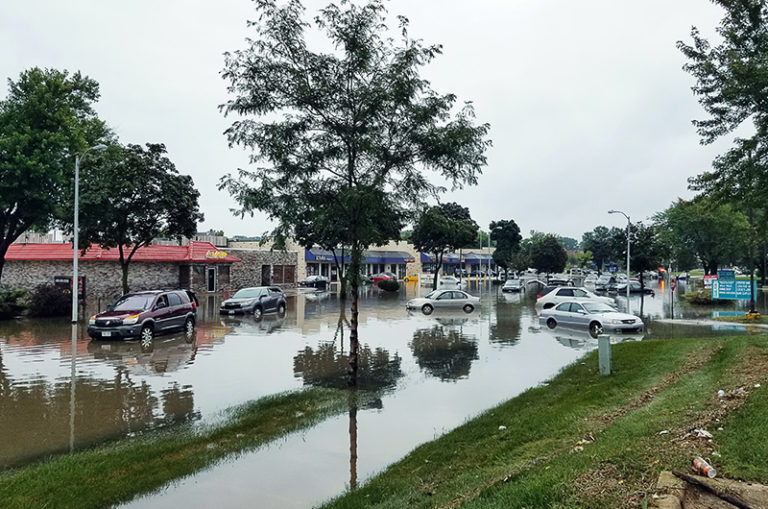 Floods may:
Floods may:
- Result from rain, snow, coastal storms, storm surges and overflows of dams and other water systems.
- Develop slowly or quickly. Flash floods can come with no warning.
- Cause outages, disrupt transportation, damage buildings, and create landslides.
If you are under a flood warning:
- Find safe shelter right away.
- Do not walk, swim or drive through flood waters. Turn Around, Don’t Drown!
- Remember, just six inches of moving water can knock you down, and one foot of moving water can sweep your vehicle away.
- Stay off bridges over fast-moving water.
- Depending on the type of flooding:
- Evacuate if told to do so.
- Move to higher ground or a higher floor.
- Stay where you are.
Preparing for a Flood
Know Your Risk for Floods
Visit FEMA’s Flood Map Service Center to know types of flood risk in your area. The Emergency Alert System (EAS) and National Oceanic and Atmospheric Administration (NOAA) Weather Radio also provide emergency alerts.
Purchase Flood Insurance
Purchase or renew a flood insurance policy. Homeowner’s insurance policies do not cover flooding. It typically takes up to 30 days for a policy to go into effect so the time to buy is well before a disaster. Get flood coverage under the National Flood Insurance Program (NFIP).
Preparing for a Flood
Make a plan for your household, including your pets so that you and your family know what to do, where to go, and what you will need to protect yourselves from flooding. Learn and practice evacuation routes, shelter plans, and flash flood response. Gather supplies, including non-perishable foods, cleaning supplies, and water for several days, in case you must leave immediately or if services are cut off in your area.
In Case of Emergency
Keep important documents in a waterproof container. Create password-protected digital copies. Protect your property. Move valuables to higher levels. Declutter drains and gutters. Install check valves. Consider a sump pump with a battery.
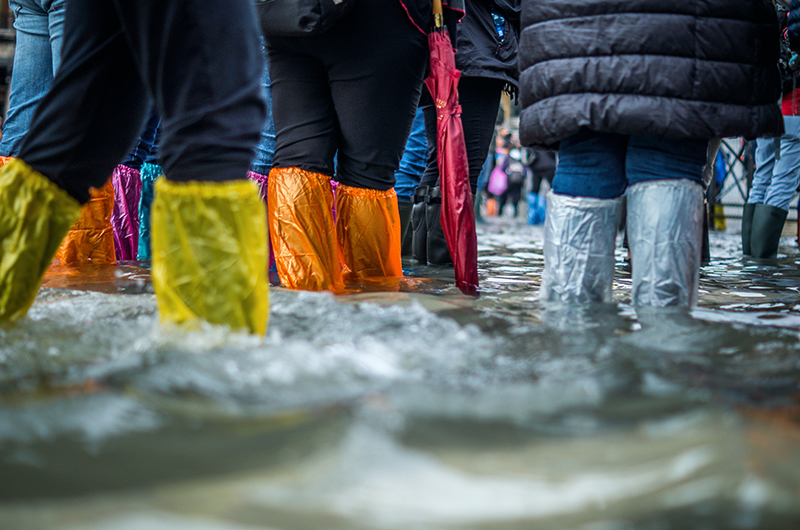
Staying Safe During a Flood
- Evacuate immediately, if told to evacuate. Never drive around barricades. Local responders use them to safely direct traffic out of flooded areas.
- Contact your healthcare provider If you are sick and need medical attention. Wait for further care instructions and shelter in place, if possible. If you are experiencing a medical emergency, call 9-1-1.
- Listen to EAS, NOAA Weather Radio or local alerting systems for current emergency information and instructions regarding flooding.
- Do not walk, swim, or drive through flood waters. Turn Around. Don’t Drown!
- Stay off bridges over fast-moving water. Fast-moving water can wash bridges away without warning.
- Stay inside your car if it is trapped in rapidly moving water. Get on the roof if water is rising inside the car.
- Get to the highest level if trapped in a building. Only get on the roof if necessary and once there signal for help. Do not climb into a closed attic to avoid getting trapped by rising floodwater.
Staying Safe After a Flood
- Pay attention to authorities for information and instructions. Return home only when authorities say it is safe.
- Avoid driving except in emergencies.
- Wear heavy work gloves, protective clothing, and boots during clean up and use appropriate face coverings or masks if cleaning mold or other debris.
- People with asthma and other lung conditions and/or immune suppression should not enter buildings with indoor water leaks or mold growth that can be seen or smelled. Children should not take part in disaster cleanup work.
- Be aware that snakes and other animals may be in your house.
- Be aware of the risk of electrocution. Do not touch electrical equipment if it is wet or if you are standing in water. Turn off the electricity to prevent electric shock if it is safe to do so.
- Avoid wading in floodwater, which can be contaminated and contain dangerous debris. Underground or downed power lines can also electrically charge the water.
- Use a generator or other gasoline-powered machinery ONLY outdoors and away from windows.
Associated Content
- National Weather Service
- Flood Information Sheet
- Protective Actions Research for Flood
- National Flood Insurance Program (NFIP)
- National Weather Service Weather Ready Nation Spring Safety Outreach Materials
- Flood Insurance Facts
- Six Things to Know Before a Disaster
- When the Cloud Forms
- How to Prepare for a Flood
- File A Flood Insurance Claim
- Your Homeowners Insurance Does Not Cover Flood
- American Red Cross
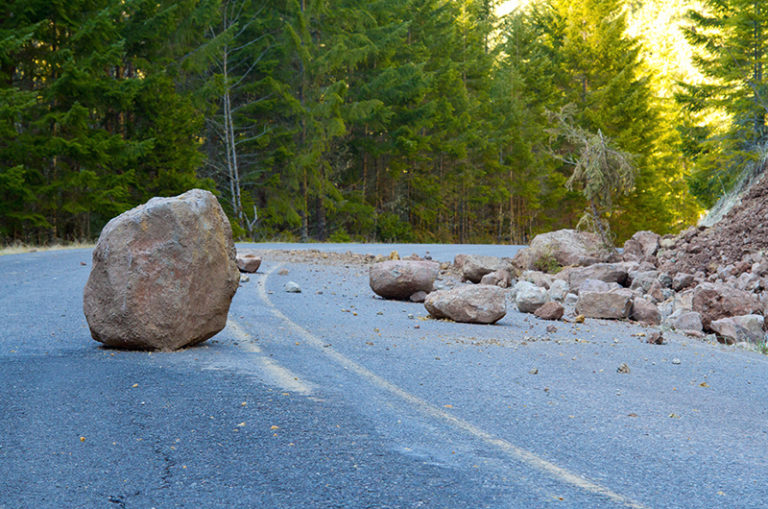 Landslides occur in all U.S. states and territories and can be caused by many factors including earthquakes, storms, volcanic eruptions, fire and human modification of land. The most deadly landslides are the ones that occur quickly, often with little notice.
Landslides occur in all U.S. states and territories and can be caused by many factors including earthquakes, storms, volcanic eruptions, fire and human modification of land. The most deadly landslides are the ones that occur quickly, often with little notice.
In a landslide, masses of rock, earth or debris move down a slope. Debris and mud flows are rivers of rock, earth and other debris saturated with water. They develop during intense rainfall, runoff, or rapid snowmelt, changing the earth into a flowing river of mud or “slurry.” They can flow rapidly, striking with little or no warning at avalanche speeds (faster than a person can run). They also can travel many miles from their source, growing in size as they pick up trees, boulders, cars and other materials. Debris flows don’t always stay in stream channels and they can flow sideways as well as downhill.
When a wildfire burns a slope, it increases the chance of debris flows for several years. Although some landslides require lengthy rain and saturated slopes, a debris flow can start on a dry slope after only a few minutes of intense rain. “Intense” rain means a burst of rain at a fast rate, about half an inch in an hour. With debris flows, the rate matters more than total rainfall.
How to protect yourself or your property depends on the type of landslide. Land-use zoning, professional inspections, and proper design can reduce many landslide problems but evacuation is often the only way to protect lives from a debris flow or other fast-moving landslide. Never ignore an evacuation order.
Before a Landslide
The following are things you can do to protect yourself, your family, and your property from the effects of a landslide or debris flow:
- To begin preparing, you should build an emergency kit and make a family communications plan.
- Make a plan for your household, including your pet(s), so that you and your family know what to do, where to go, and what you will need to protect yourselves from landslides.
- Connect with your local emergency services, heed evacuation warnings.
- Sign up for your community’s warning system if available. The Emergency Alert System (EAS) and National Oceanic and Atmospheric Administration (NOAA) Weather Radio also provide emergency alerts.
- Leave if you have been told to evacuate or you feel it is unsafe to remain in your home. Text SHELTER+ your ZIP code to 43362 (4FEMA) to find the nearest shelter in your area (example: shelter 12345).
- Prepare for landslides by following proper land-use procedures – avoid building near steep slopes, close to mountain edges, near drainage ways or along natural erosion valleys.
- Become familiar with the land around you. Learn whether landslides have occurred in your area by contacting local officials. However, don’t assume that what happened last time will happen next time. Debris flows can start in places they’ve never been and return to slopes where they’ve already been.
- Get an assessment of your property by a qualified geotechnical professional.
- Consult a professional for advice on appropriate preventative measures for your home or business, such as flexible pipe fittings, which can better resist breakage.
- Protect your property based on recommendations from the ‘qualified geotechnical professional’ and/or local city/county guidance on protection from debris flow and flooding. You can’t stop or change the path of a debris flow. However, you may be able to protect your property from floodwaters or mud by use of sandbags, retaining walls or k-rails (Jersey barriers).
- In mud and debris flow areas, consider building channels or deflection walls to try to direct the flow around buildings. Be aware, however, that when a flow is big enough, it goes where it pleases. Also, if you divert a flow and it flows on a neighbor’s property, you may be liable for damages.
- If you are at risk from a landslide, talk to your insurance agent. Debris flow may be covered by flood insurance policies from the National Flood Insurance Program (NFIP).
- Gather supplies in case you have to leave immediately or if services are cut off. Keep in mind each person’s specific needs, including medication. Do not forget the needs of pets.
- Include non-perishable foods, cleaning supplies, and water for several days, in case you have to leave immediately or if services are cut off in your area. If you are able to, set aside items like soap, hand sanitizer that contains at least 60 percent alcohol, disinfecting wipes, and general household cleaning supplies that you can use to disinfect surfaces you touch regularly. After a landslide, you may not have access to these supplies for days or even weeks.
- Being prepared allows you to avoid unnecessary excursions and allows you to address minor medical issues at home, alleviating the burden on urgent care centers and hospitals.
- Remember that not everyone can afford to respond by stocking up on necessities. For those who can afford it, making essential purchases and slowly building up supplies in advance will allow for longer time periods between shopping trips. This helps to protect those who are unable to procure essentials in advance and must shop more frequently. In addition, consider avoiding WIC-labeled products so that those who rely on these products can access them.
Recognize Warning Signs
Watch for debris flows and other fast-moving landslides that pose threats to life:
- If you are near a wildfire burn area, pay attention to emergency alerts and weather forecasts in the burn area. The weather in the burn area could be very different from where you are.
- Listen and watch for rushing water, mud, unusual sounds.
- Unusual sounds, such as trees cracking or boulders knocking together, might indicate moving debris.
- A faint rumbling sound that increases in volume is noticeable as the landslide nears.
- Fences, retaining walls, utility poles, k-rails, boulders, or trees move.
- Huge boulders in the landscape can be signs of past debris flows.
Watch for slow-moving landslides that pose threats to property:
- Changes occur in your landscape such as patterns of storm-water drainage on slopes (especially the places where runoff water converges) land movement, small slides, flows, or progressively leaning trees.
- Doors or windows stick or jam for the first time.
- New cracks appear in plaster, tile, brick, or foundations.
- Outside walls, walks, or stairs begin pulling away from the building.
- Slowly developing, widening cracks appear on the ground or on paved areas such as streets or driveways.
- Underground utility lines break.
- Bulging ground appears at the base of a slope.
- Water breaks through the ground surface in new locations.
- Fences, retaining walls, utility poles, or trees tilt or move.
- The ground slopes downward in one direction and may begin shifting in that direction under your feet.
During a Landslide
- Listen to local news stations on a battery-powered radio for warnings.
- Heed all warnings and evacuation notices.
- Always follow the instructions from local emergency managers. They provide the latest recommendations based on the threat in your community.
- Make plans to shelter with friends or family in advance so that you can evacuate to their safe location. If you are unable to do so, check with local authorities to determine which public shelters are open. Review your previous evacuation plan and consider alternative options to maintain social and physical distancing to prevent the spread of COVID-19.
- If you are sheltering with people who are not part of your household, be sure to wear a mask and maintain a distance of at least six feet between yourself and others. Masks should not be worn by children under two years old, people who have trouble breathing, and people who cannot remove them on their own.
- If you are told by local authorities to evacuate to a public shelter, try to bring items that can help protect yourself and your family from COVID-19, such as hand sanitizer that contains at least 60 percent alcohol, general household cleaning supplies, and two masks per person.
- During a storm that could cause a landslide, stay alert and awake. Many deaths from landslides occur while people are sleeping.
- Be aware that by the time you are sure a debris flow is coming, that will be too late to get away safely. Never cross a road with water or mud flowing. Never cross a bridge if you see a flow approaching. It can grow faster and larger too quickly for you to escape.
- If you do get stuck in the path of a landslide move uphill as quickly as possible.
- Avoid river valleys and low-lying areas during times of danger.
- If you are near a stream or channel, be alert for any sudden increase or decrease in water flow or water that changes from clear to muddy. These can be signs that a landslide is coming.
After a Landslide
- Stay away from the slide area. There may be danger of additional slides.
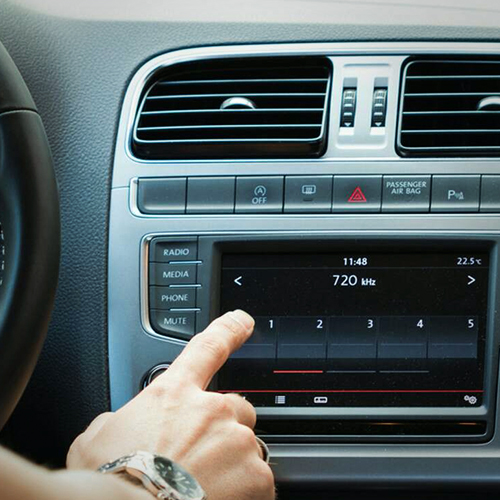 Listen to local radio or television stations for the latest emergency information.
Listen to local radio or television stations for the latest emergency information.- Watch for flooding. Floods sometimes follow landslides and debris flows because they may both be started by the same conditions.
- Check for injured and trapped persons near the slide, without entering the direct slide area. Direct rescuers to their locations.
- Report broken utility lines and damaged roadways and railways to appropriate authorities. Reporting potential hazards will get the utilities turned off as quickly as possible, preventing further hazard and injury.
- Allow trained professionals to check the building foundation, chimney, and surrounding land for damage.
- Replant damaged ground as soon as possible since erosion caused by loss of ground cover can lead to flash flooding and additional landslides in the near future.
- Seek advice from a geotechnical expert for evaluating landslide hazards or designing corrective techniques to reduce landslide risk. A professional will be able to advise you of the best ways to prevent or reduce landslide risk, without creating further hazard.
- Continue taking steps to protect yourself from COVID-19 and other infectious diseases, such as washing your hands often and cleaning commonly touched surfaces with disinfecting products.
- Engage virtually with your community through video and phone calls. Know that it’s normal to feel anxious or stressed. Take care of your body and talk to someone if you are feeling upset.